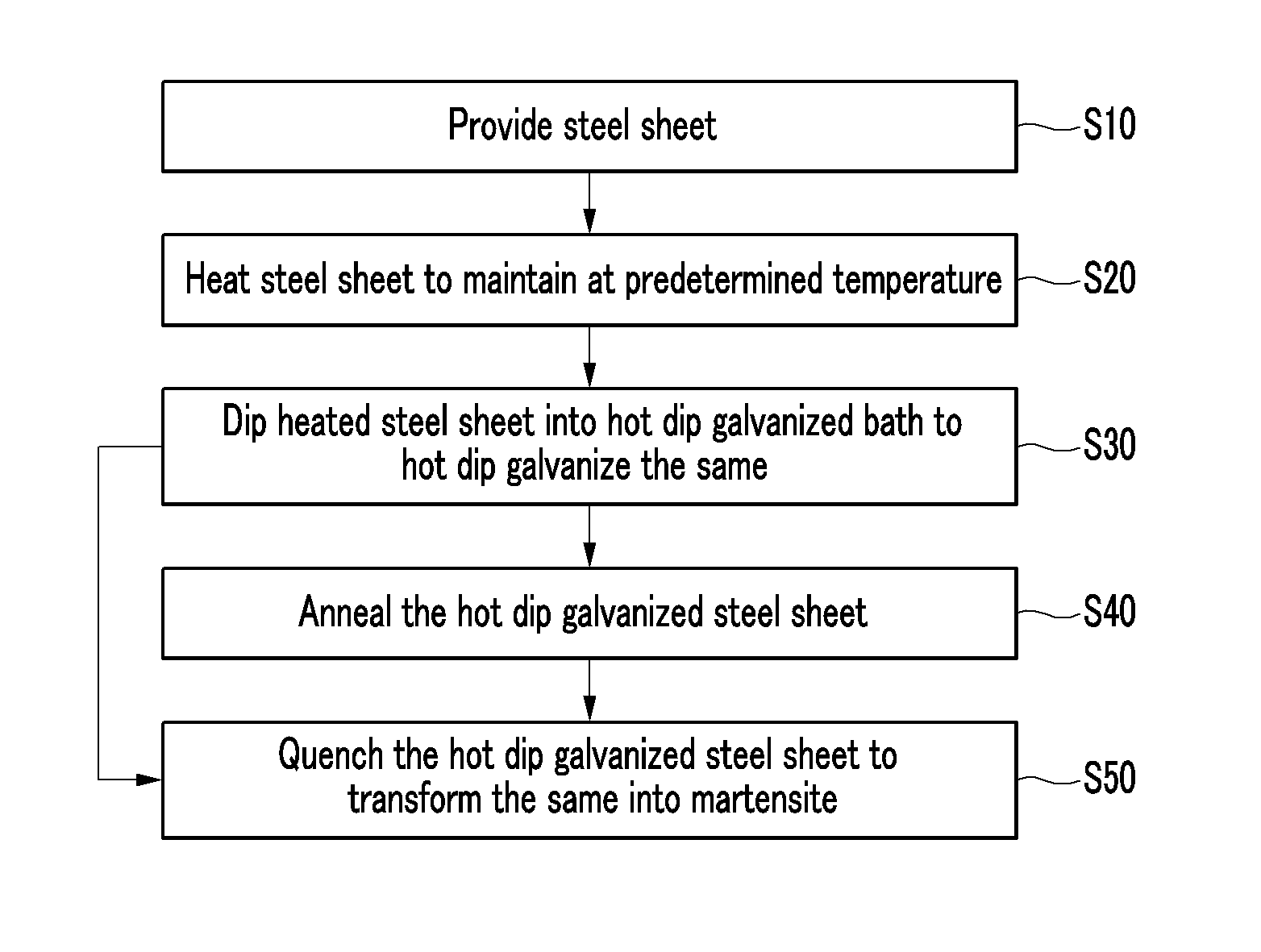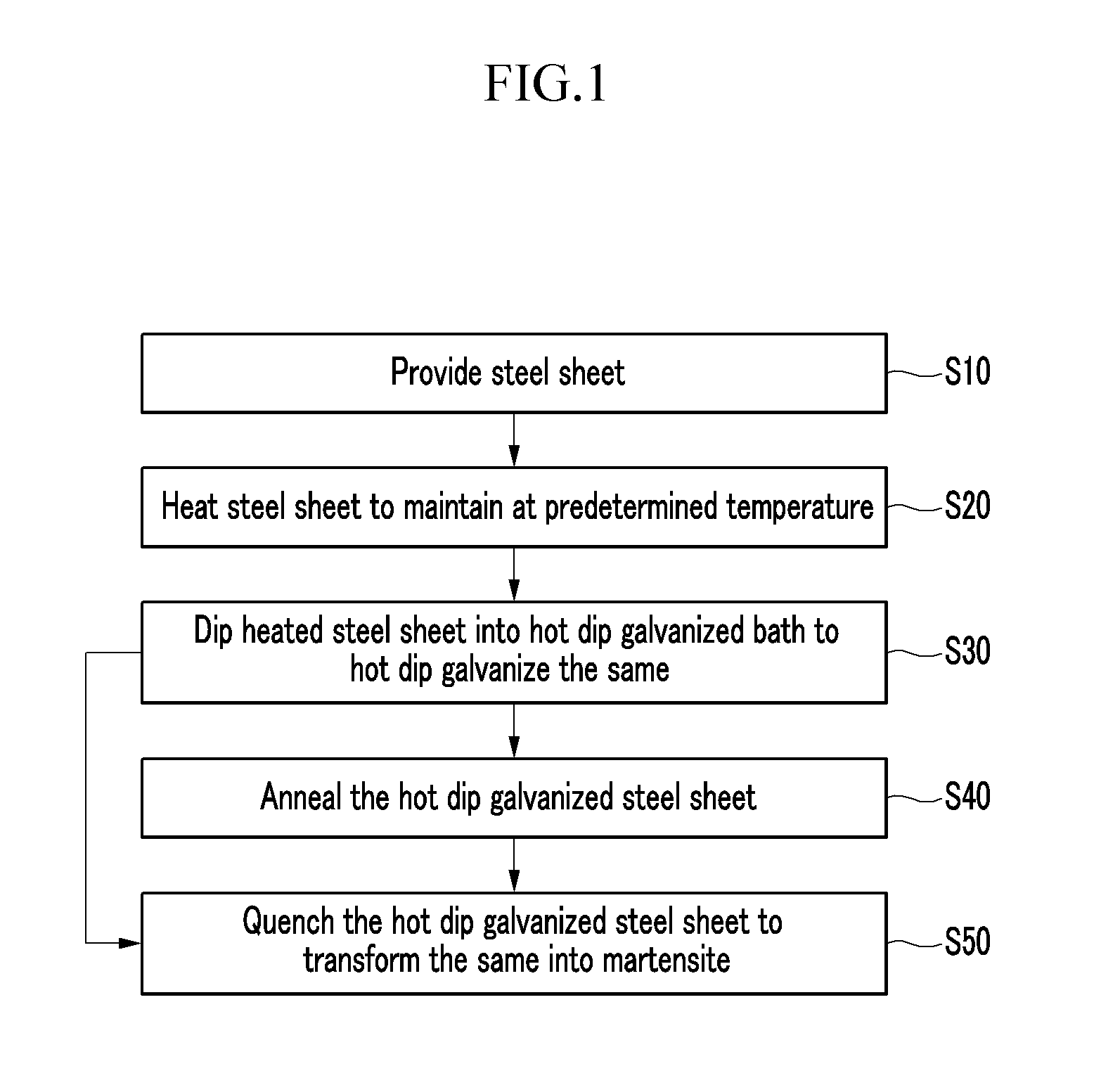Method for manufacturing an ultrahigh strength hot dip galvanized steel sheet having martensitic structure as matrix
a technology of martenitic structure and hot dip galvanized steel, which is applied in the direction of manufacturing tools, heat treatment equipment, transportation and packaging, etc., can solve the problems of insufficient strength of the above-mentioned steels to protect the occupants from a broadside collision or overturning, and achieve excellent strength, excellent corrosion resistance, and the effect of improving the strength of the outer components
- Summary
- Abstract
- Description
- Claims
- Application Information
AI Technical Summary
Benefits of technology
Problems solved by technology
Method used
Image
Examples
experimental examples
[0068]The hot dip galvanization process is simulated by using steel having the above-noted composition range. In Experimental Examples 1 to 4, the hot dip galvanizing process is simulated by using a salt bath. In Experimental Examples 5 and 6, the hot dip galvanizing process is simulated by using the multi-purpose annealing simulator (MultiPAS) testing device by Vatron. Also, in Experimental Examples 7 and 8, the hot dip galvanizing process is simulated by using the Rhesca galvanizing simulator.
experimental example 1
[0069]A sample including C of 0.15 wt %, MN of 2.0 wt %, Si of 0.3 wt %, Al of 0.03 wt %, Cr of 0.3 wt %, Mo of 0.3 wt %, N of 30 ppm, B of 30 ppm, an impurity, and the remainder of Fe is prepared. The sample is dipped into a salt bath heated at 870° C. for one minute. The sample heated at 870° C. is dipped into a salt bath heated at 460° C. for 10 seconds. The dipped sample is drawn out, cooled with water, and then quenched. That is, the GI process is simulated in Experimental Example 1. Other detailed process conditions will not be described since they are easily understood by a skilled person in the art.
experimental example 2
[0070]A sample having the same composition as Experimental Example 1 is prepared. The sample is dipped into a salt bath heated at 870° C. and left in it for one minute. The sample heated at 870° C. is dipped into a salt bath at 460° C. for 10 seconds. The dipped sample is drawn out, dipped 20 seconds into a salt bath at 500° C., is drawn out a, and is cooled with water to reach room temperature. That is, the GA process is simulated in Experimental Example 1. Detailed process conditions will not be described since they are easily understood by a skilled person in the art.
PUM
| Property | Measurement | Unit |
|---|---|---|
| temperature | aaaaa | aaaaa |
| temperature | aaaaa | aaaaa |
| angles | aaaaa | aaaaa |
Abstract
Description
Claims
Application Information
 Login to View More
Login to View More - R&D
- Intellectual Property
- Life Sciences
- Materials
- Tech Scout
- Unparalleled Data Quality
- Higher Quality Content
- 60% Fewer Hallucinations
Browse by: Latest US Patents, China's latest patents, Technical Efficacy Thesaurus, Application Domain, Technology Topic, Popular Technical Reports.
© 2025 PatSnap. All rights reserved.Legal|Privacy policy|Modern Slavery Act Transparency Statement|Sitemap|About US| Contact US: help@patsnap.com



